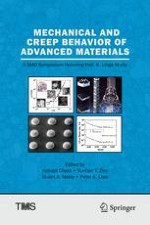This collection commemorates the occasion of the honorary symposium that celebrated the 75th birthday and lifelong contributions of Professor K.L. Murty. The topics cover the present status and recent advances in research areas in which he made seminal contributions. The volume includes articles on a variety of topics such as high-temperature deformation behaviors of materials (elevated temperature creep, tensile, fatigue, superplasticity) and their micromechanistic interpretation, understanding mechanical behavior of HCP metals/alloys using crystallographic texture, radiation effects on deformation and creep of materials, mechanical behavior of nanostructured materials, fracture and fracture mechanisms, development and application of small-volume mechanical testing techniques, and general structure-property correlations.
